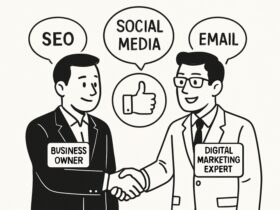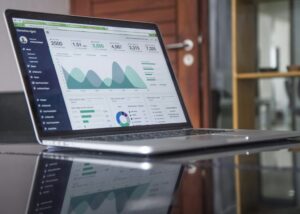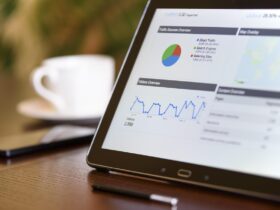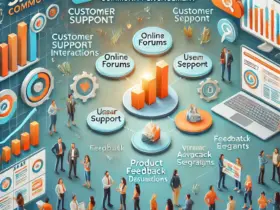Marketing automation platforms are complex products. They promise efficiency, smarter insights, and more scalable customer engagement—but they also require time, trust, and understanding before a buyer says yes. For companies selling these platforms, the challenge isn’t just generating leads; it’s nurturing belief. That’s where LinkedIn becomes more than just a social channel—it becomes a classroom, a proving ground, and a conversion engine all at once.
Why LinkedIn Is a Natural Fit for Marketing Automation Brands
Marketing automation tools live in the B2B ecosystem, and so does LinkedIn. It’s the platform where your ideal buyers—CMOs, marketing directors, growth managers, and operations leads—spend time to learn, share, and make decisions.
Unlike traditional ad channels that compete for fleeting attention, LinkedIn offers a professional context. Your message doesn’t appear between cat videos or lifestyle posts. It sits alongside industry updates, peer discussions, and thought leadership—exactly the kind of environment where serious business decisions begin.
For automation platforms, this means you can show value long before you ask for a sale. You can educate your audience through content that helps them understand their pain points and visualize solutions. And that’s often half the battle.
Educating Before Selling: The Awareness Stage
Most marketing automation buyers don’t wake up thinking, “I need a new platform.” They usually recognize smaller symptoms first—messy data, inconsistent customer journeys, slow campaign launches. LinkedIn lets you meet them right at that stage of curiosity.
Think of your first campaigns as guided introductions, not hard sells. Articles, videos, or carousel posts that explain trends in marketing operations or showcase results from automation success stories work wonders here. You’re not saying “buy now,” you’re saying, “this might be the smarter way to work.”
Short, story-driven posts can also play a big role. A well-written narrative about how one company scaled campaigns 3x faster using better automation can inspire real engagement. That’s the type of education that doesn’t feel like marketing—it feels like mentorship.
Middle of the Funnel: Turning Interest Into Trust
Once you’ve caught their attention, the next step is deepening understanding. This is where educational assets like webinars, playbooks, or benchmark reports can shine.
Instead of pushing demos too soon, try building sequences that offer layered value. For instance:
- A sponsored post promoting an “Automation Maturity Assessment”
- Retargeting those who clicked with a “Guide to Integrating CRM Data with Automation”
- Finally, a lead gen form offering a personalized consultation or audit
This gradual approach respects the buyer’s journey and builds trust step by step. By the time they’re ready for a demo, they already understand your framework and value.
The Role of Paid Campaigns: Making Education Scalable
Organic reach has its limits. To truly scale this kind of educational journey, paid promotion becomes essential. And that’s where Linkedin ads enter the picture.
LinkedIn’s targeting capabilities allow marketing automation platforms to reach decision-makers based on seniority, job title, company size, and even specific tech stacks. Imagine being able to run content campaigns targeted only at companies using your competitors’ tools or those hiring for marketing ops roles—both strong buying signals.
Using sponsored content, dynamic ads, or conversation ads, you can personalize outreach at scale. Each touchpoint builds familiarity and credibility, ensuring that when a prospect finally engages with your sales team, they already know who you are and what problem you solve.
Showcasing ROI Without Overselling
Automation buyers are analytical by nature. They won’t just take your word for it—they’ll want to see proof. Case studies, data-backed results, and customer testimonials help turn educational content into persuasive narratives.
But the trick is to share them without slipping into self-promotion. Instead of framing it as “how we achieved X,” position it as “how this company solved a challenge using automation.” That small shift makes your content more accessible and less self-serving. It feels like a lesson, not a pitch.
Video also works incredibly well here. Short clips from customer interviews, behind-the-scenes insights, or walkthroughs of automation workflows make your brand human and approachable. And because LinkedIn auto-plays video silently, captivating visuals and subtitles are key.
Optimizing Campaigns for Conversion
Even the best educational campaigns can fall flat without thoughtful optimization. Testing different ad formats, visuals, and CTAs helps you find what resonates. Metrics like click-through rate and engagement are useful, but they don’t tell the full story—look deeper into lead quality, message recall, and conversion velocity.
For example:
- If your webinar ads drive high sign-ups but low attendance, the topic might be off.
- If your case study content gets engagement but not downloads, the value proposition might need sharpening.
- If click costs are climbing, revisit audience segmentation—narrowing down by intent signals often improves efficiency.
The goal isn’t just cheaper clicks—it’s smarter engagement that reflects real buyer intent.
Integrating LinkedIn with the Broader Funnel
LinkedIn shouldn’t exist in isolation. Syncing your campaigns with CRM and marketing automation data creates a feedback loop that refines targeting and improves ROI over time. You can retarget prospects who’ve engaged with emails, nurture LinkedIn leads through automated sequences, or use LinkedIn insights to prioritize outbound efforts.
When your marketing automation platform and LinkedIn strategy talk to each other, the entire funnel becomes more intelligent. Every click, view, or form fill feeds your data engine, sharpening your next move.
Final Thought: Turning Education Into Momentum
Selling marketing automation platforms is ultimately about helping businesses evolve how they work. The firms that succeed don’t push product—they teach transformation. LinkedIn gives you the space to do that with nuance, authority, and authenticity.
By leading with education and using paid campaigns to scale visibility, marketing automation companies can shorten sales cycles and strengthen credibility simultaneously. It’s not about shouting louder—it’s about saying something worth listening to, in the place where your buyers are already paying attention.






